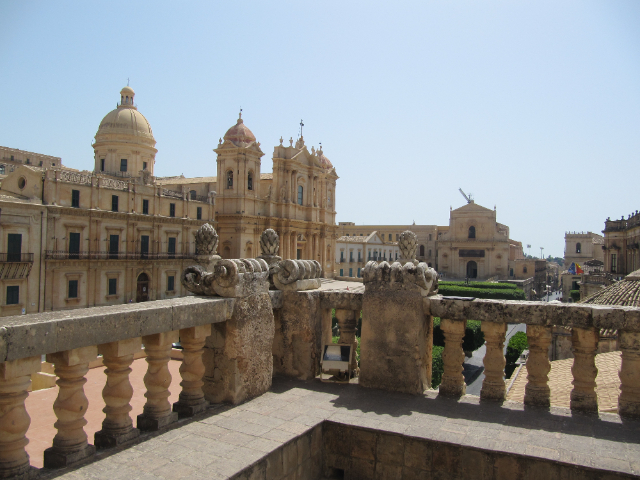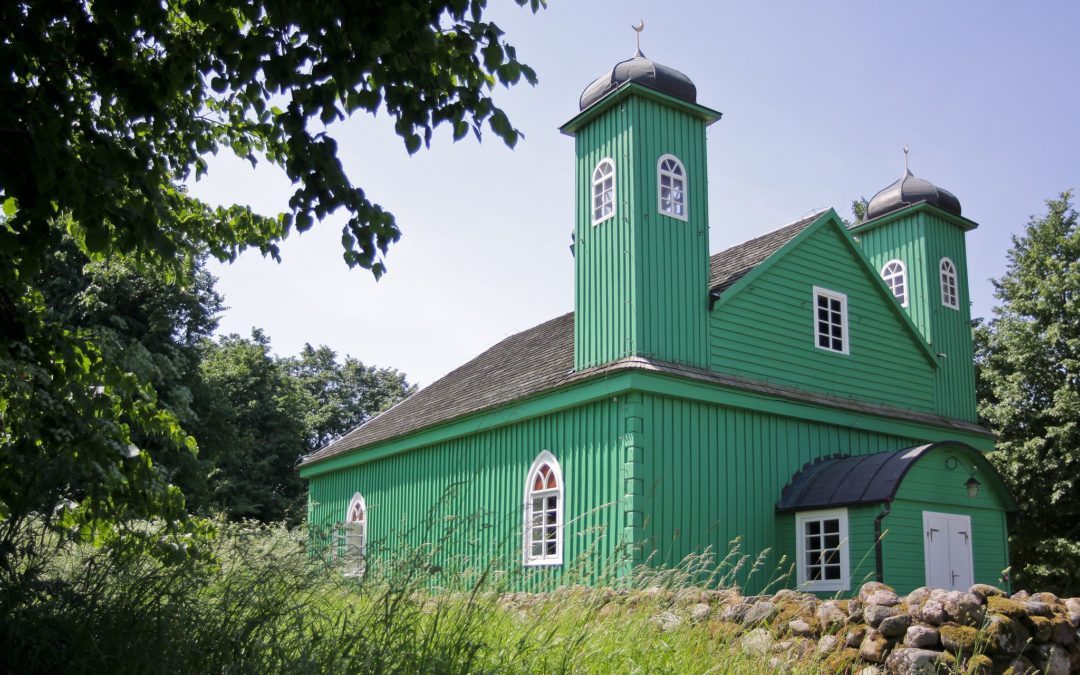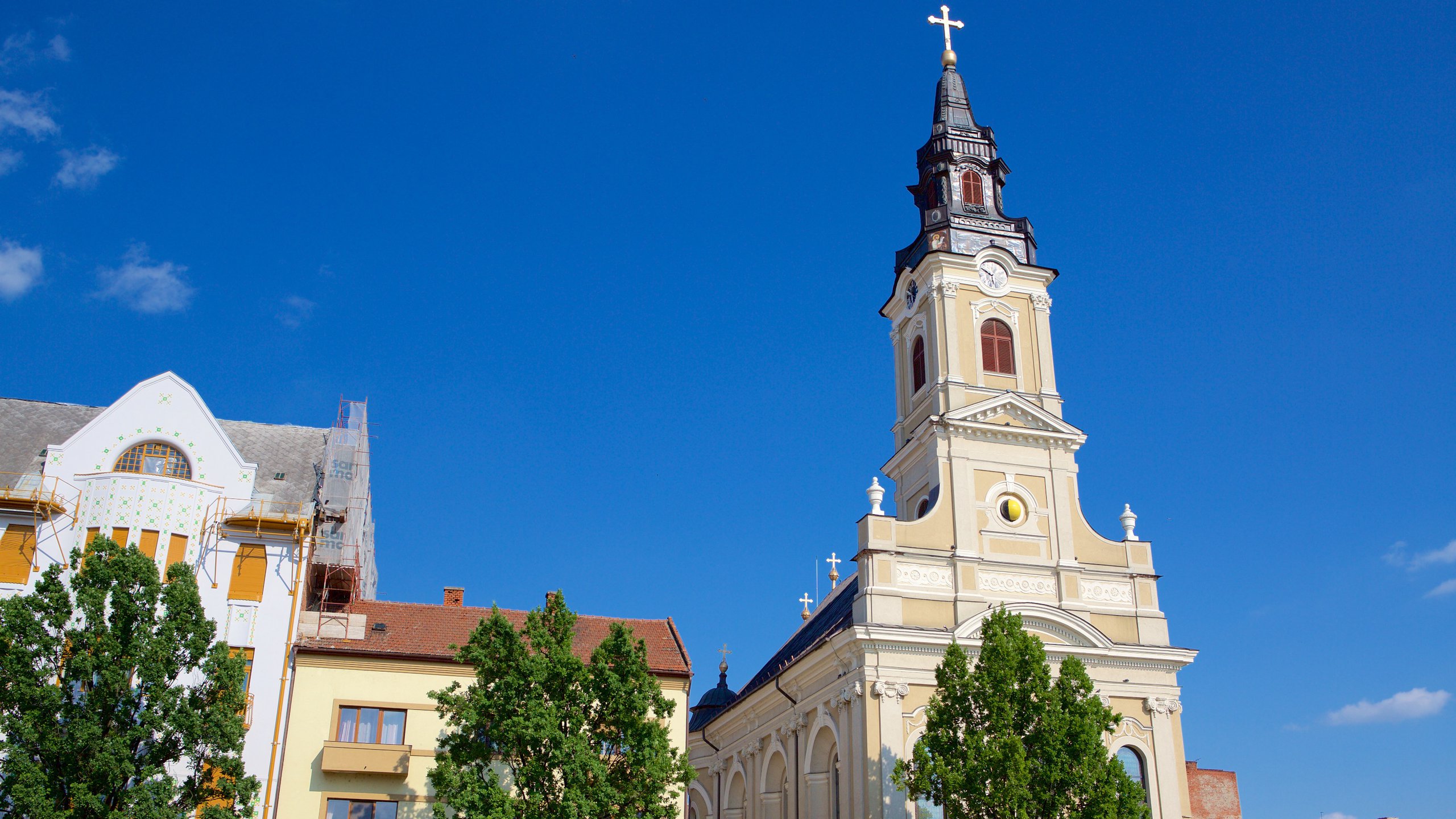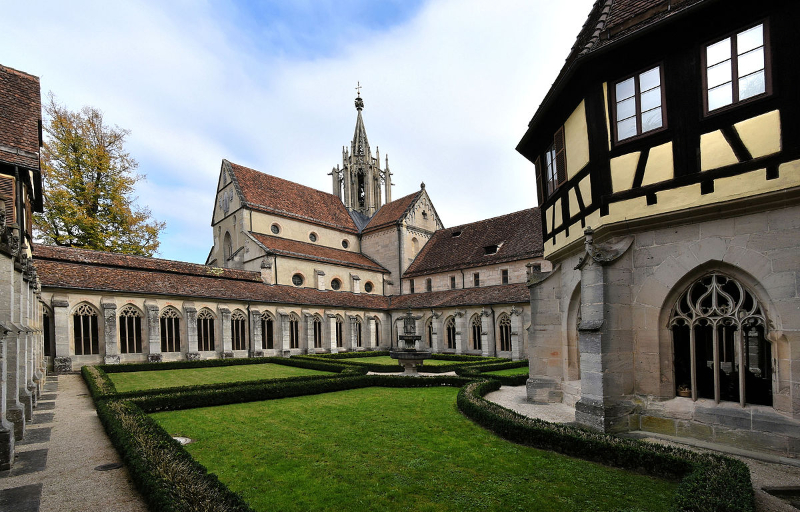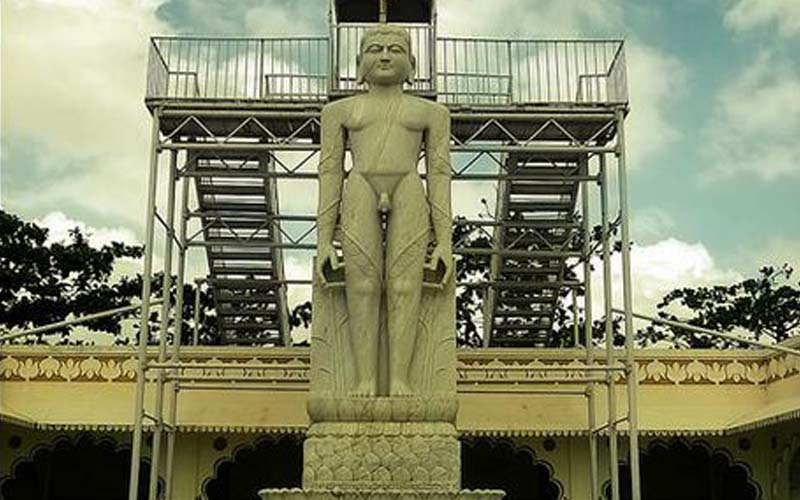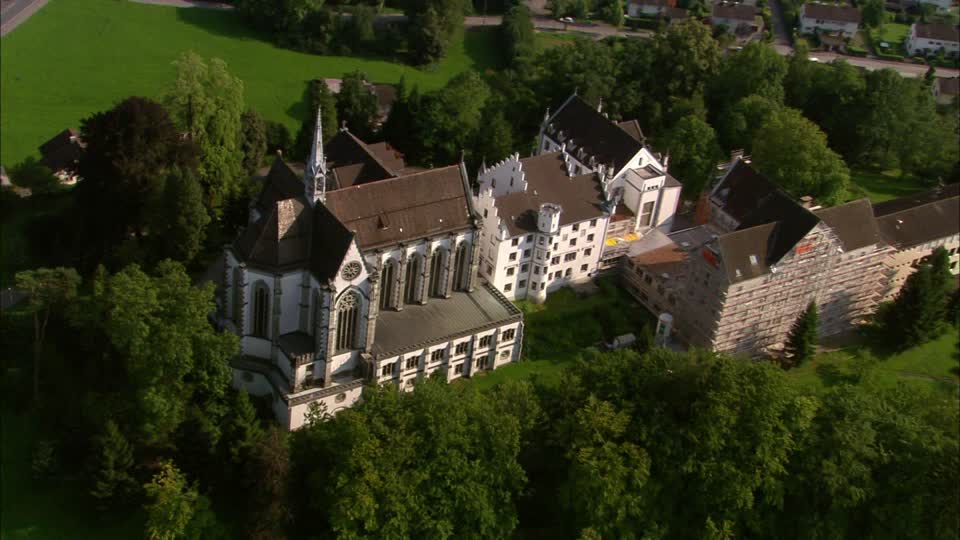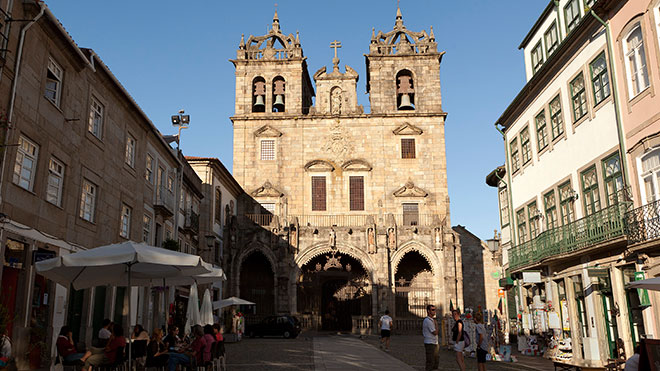The Church of St. Charles, erected between 1736 and 1746 and dedicated to St. Charles Borromeo, is distinguished by its distinctive concave façade composed of three superimposed orders in Doric, Ionic, and Corinthian architectural styles, adorned with numerous columns.The material used for the construction is local sandstone, which gives the building a golden appearance. Inside, the church has a longitudinal plan with three naves and a central altar inlaid with polychrome marble, presumably from the old Jesuit church of Noto Antica, which was destroyed in the devastating Val di Noto earthquake in 1693.Noteworthy are the four bas-relief depictions of the Stations of the Cross, the frescoes with representations of the "Transfiguration," the "Healing of the Paralytic," and the "Triumph of the Agnus Dei" attributed to Carasi, as well as the two 19th-century statues representing Faith and Hope, created by Giuseppe Giuliano.In the choir loft, there is a valuable 18th-century organ decorated with stuccowork of great artistic value. The church’s bell tower, with its three bells that ring regularly throughout the day, can be visited and offers a panoramic view of the entire historic center of Noto, from the imposing dimensions of the cathedral to the characteristic yellow tufa houses that distinguish the city.Adjacent to the church is the former Jesuit convent, whose ancient ornate stone portals are still visible. This building, attributed to Gagliardi, was once famous for the humanistic studies conducted there.The Church of San Carlo in Noto represents an important example of Baroque religious architecture, enriched by fine works of art and an atmosphere of solemnity. A visit to this church and its bell tower also offers the opportunity to admire a breathtaking panoramic view of the city.
